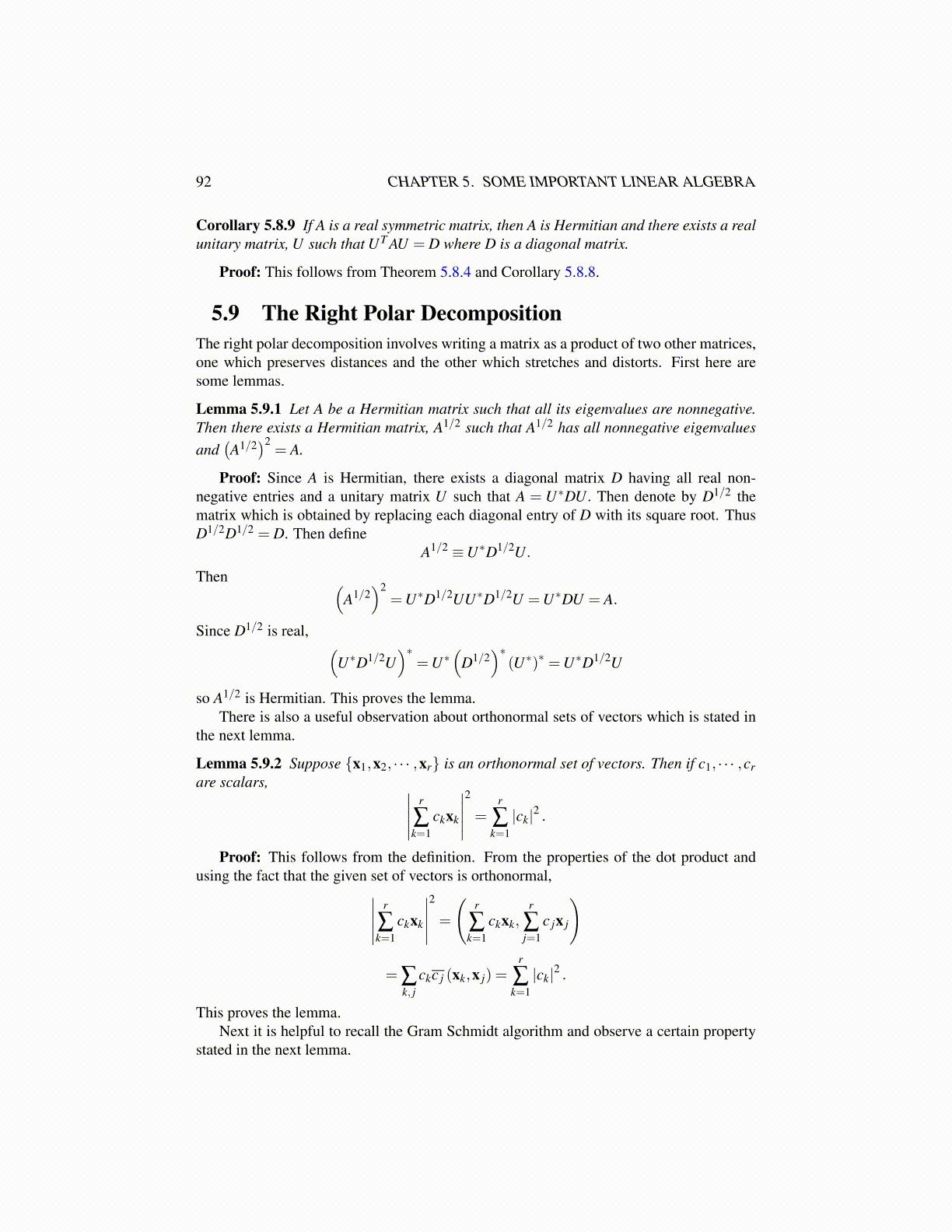
92 CHAPTER 5. SOME IMPORTANT LINEAR ALGEBRA
Corollary 5.8.9 If A is a real symmetric matrix, then A is Hermitian and there exists a realunitary matrix, U such that UT AU = D where D is a diagonal matrix.
Proof: This follows from Theorem 5.8.4 and Corollary 5.8.8.
5.9 The Right Polar DecompositionThe right polar decomposition involves writing a matrix as a product of two other matrices,one which preserves distances and the other which stretches and distorts. First here aresome lemmas.
Lemma 5.9.1 Let A be a Hermitian matrix such that all its eigenvalues are nonnegative.Then there exists a Hermitian matrix, A1/2 such that A1/2 has all nonnegative eigenvaluesand
(A1/2
)2= A.
Proof: Since A is Hermitian, there exists a diagonal matrix D having all real non-negative entries and a unitary matrix U such that A = U∗DU. Then denote by D1/2 thematrix which is obtained by replacing each diagonal entry of D with its square root. ThusD1/2D1/2 = D. Then define
A1/2 ≡U∗D1/2U.
Then (A1/2
)2=U∗D1/2UU∗D1/2U =U∗DU = A.
Since D1/2 is real, (U∗D1/2U
)∗=U∗
(D1/2
)∗(U∗)∗ =U∗D1/2U
so A1/2 is Hermitian. This proves the lemma.There is also a useful observation about orthonormal sets of vectors which is stated in
the next lemma.
Lemma 5.9.2 Suppose {x1,x2, · · · ,xr} is an orthonormal set of vectors. Then if c1, · · · ,crare scalars, ∣∣∣∣∣ r
∑k=1
ckxk
∣∣∣∣∣2
=r
∑k=1|ck|2 .
Proof: This follows from the definition. From the properties of the dot product andusing the fact that the given set of vectors is orthonormal,∣∣∣∣∣ r
∑k=1
ckxk
∣∣∣∣∣2
=
(r
∑k=1
ckxk,r
∑j=1
c jx j
)
= ∑k, j
ckc j (xk,x j) =r
∑k=1|ck|2 .
This proves the lemma.Next it is helpful to recall the Gram Schmidt algorithm and observe a certain property
stated in the next lemma.